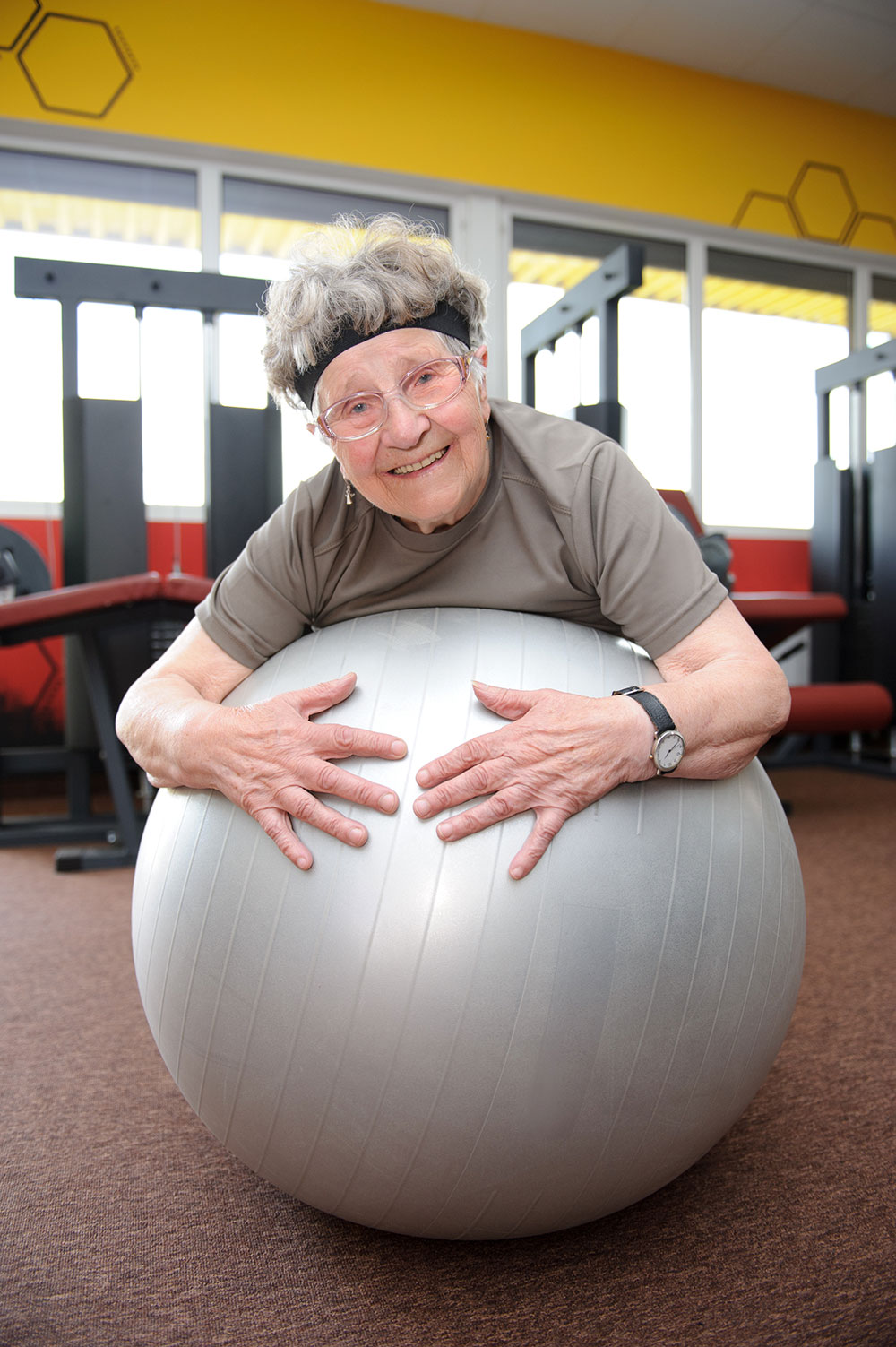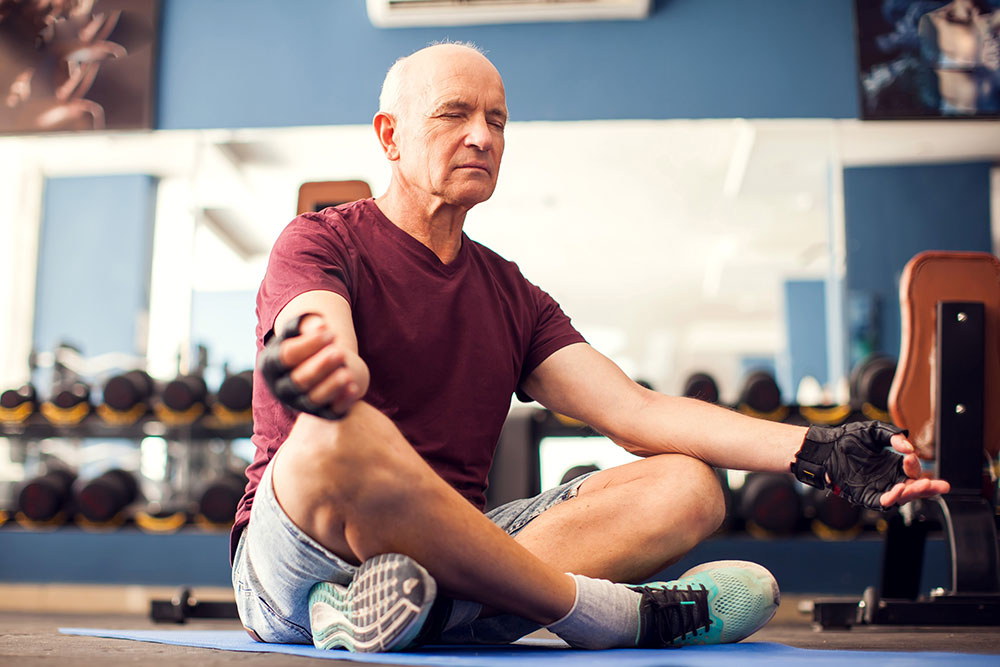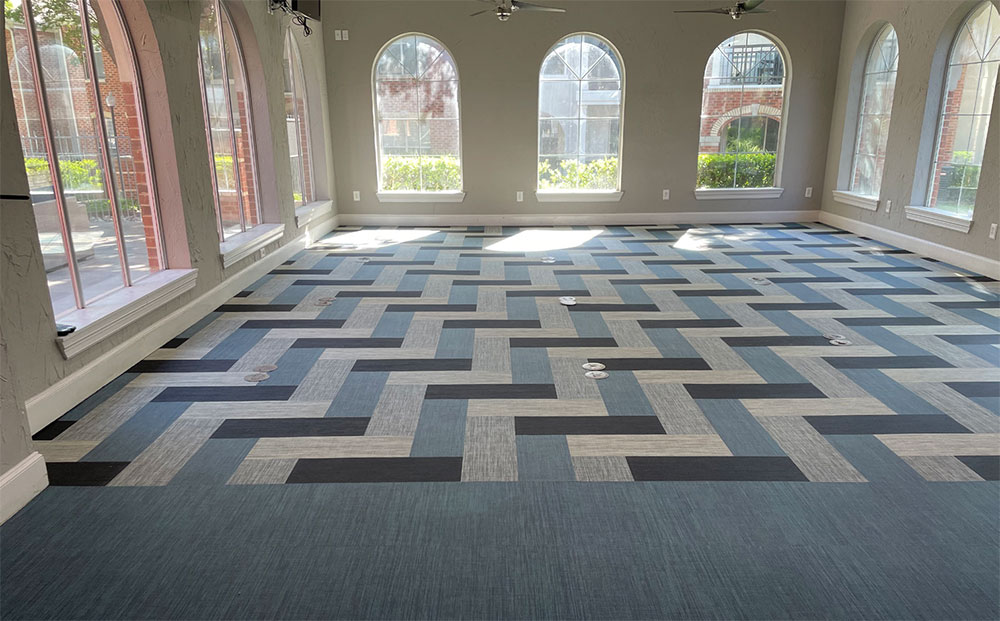DESIGNING & EQUIPPING
PREMIER FITNESS SOLUTIONS →
PREMIER FITNESS SOLUTIONS →
Sought-After Senior Living Communities Have These Three Things in Common
| For your community to be among those with a waiting list of qualified residents hoping to get in, there are three key areas to address (and one of them is not an out-sized budget): |
 1. Wellness is an Evident Priority 1. Wellness is an Evident PriorityPutting wellness out front is a must for today’s multi-faceted older adults. Starting with fully-equipped fitness centers and equipment with lower step-up heights and lower start-up resistance levels, today’s most compelling Active Aging fitness and wellness resources address both aging bodies and aging brains to keep residents whole-life healthy. Cardio is a bit more relaxed for older adult populations, with recumbent steppers being the most popular option for preserving mobility around daily activities like walking and climbing stairs. Engaging the core and activating the balance system through functional training, or bolstering leg strength, balance and coordination are top considerations, as fall risk reduction continues to be the lead fitness motivator in seniors. Probably the most talked-about current trend in Active Aging fitness is dual-tasking – combining physical and cognitive exercises for a cumulative brain-body benefit.  “Exercising the body and the brain together is far greater than one in isolation,” says Eric Jenican, Senior Wellness Specialist at Advanced Exercise, adding that “If you don’t have an emphasis on brain health, you’re behind.” With the implications and results of dual-tasking training just now being studied in depth for older adults, creating on-site programs can be intimidating. “Brain Fitness initiatives are coming on strong, but these enhancements have a labor investment that go along with them,” continues Jenican. “Until those options make more business sense, many communities won’t bring them on.” “Exercising the body and the brain together is far greater than one in isolation,” says Eric Jenican, Senior Wellness Specialist at Advanced Exercise, adding that “If you don’t have an emphasis on brain health, you’re behind.” With the implications and results of dual-tasking training just now being studied in depth for older adults, creating on-site programs can be intimidating. “Brain Fitness initiatives are coming on strong, but these enhancements have a labor investment that go along with them,” continues Jenican. “Until those options make more business sense, many communities won’t bring them on.”Dual task training in some active aging communities can be thought of as "Cognitive Play", and some of the simplest ways to engage Active Aging communities includes group fitness options. While there are some equipment options that address dual-tasking (i.e. cardio options that use gamification to reduce cognitive decline), much of the dual-tasking programming is led by trained instructors. |
|
2. Integrated, Intentional Amenities Aesthetics are important, as how a community looks and feels can be a strong determining factor for residents to decide where to live. Thoughtfulness in textures, flow and aesthetics can make a huge difference on whether or not a facility is welcoming enough to be entered, used, and appreciated. Today’s Actively Aging populations want the ability to be active and social with friends in the community – so are there accessible spaces for that to take place? They want facilities that can adapt as they continue to age – is that evident on site? They want the tools to continue to do daily activities on their own, even if they aren’t fully able bodied. Are you able to provide those? Integrating outdoor spaces for senior recreation is becoming a bigger necessity, as is the addition of cognitive options like having a “brain bar” available where a refurbished club house might become a center for brain health activities, festooned with different textures, sensory activities, etc There’s so much to explore here for progressive communities who are open to advancements proven to help older adults thrive. |
 One of the most readily available ways to address amenity excellence starts at the ground floor, literally. New flooring products that have embedded non-slip surfaces are much safer for older adults, and the aesthetics are comparable to higher-end hotels. One of the most readily available ways to address amenity excellence starts at the ground floor, literally. New flooring products that have embedded non-slip surfaces are much safer for older adults, and the aesthetics are comparable to higher-end hotels.It might seem counterintuitive, but lighter colors or variations in color help provide better depth perception, and some facilities are even highlighting the transitions. Instead of hiding floor seams they’re exploring creative, attractive ways to spotlight a slope or a flooring transition, to decrease trip and fall risks and make residents more aware of what’s underfoot. With new woven vinyl and plank options, color and texture can be effectively used to designate different spaces, activities or functions, and it can be safer, more hygienic, and more beautiful to look at simultaneously. 3. Selective Resource Support Tight budgets have many communities trying to do it all in-house, though external support doesn’t need to break the bank. Bringing in highly qualified, certified individuals (experts in working with aging populations) can augment internal staff on a part-time or single-program basis with amazing results. As communities are planning their layout, programming and community “flow”, having a general conversation with an expert can create a relationship with a trusted resource, and it might unearth questions that haven’t yet been considered -- about resident safety, technology platforms for older adults, making modifications to fit specific populations, etc. Organizations like Elevation Health are a necessary resource that can assist with a few hours of programming, or full-time on-site staff. Many communities are recruiting Technology Engagement personnel to assist with all aspects of technology – building confidence and self-sufficiency across the community, and keeping the community as a whole connected. There’s so much thought, planning and practice that goes into an Active Aging community’s success, it’s difficult to do it all on your own. Addressing the current market as well as planning ahead for the next 5+ years, this is just the beginning. There’s so much to consider, and communities with these priorities can continue to adapt and lead as Active Aging markets continue to grow far into the future. If you are looking to advance your Senior Living community, give your rep a call today. |
| View Colorado Real Estate Journal Article |



